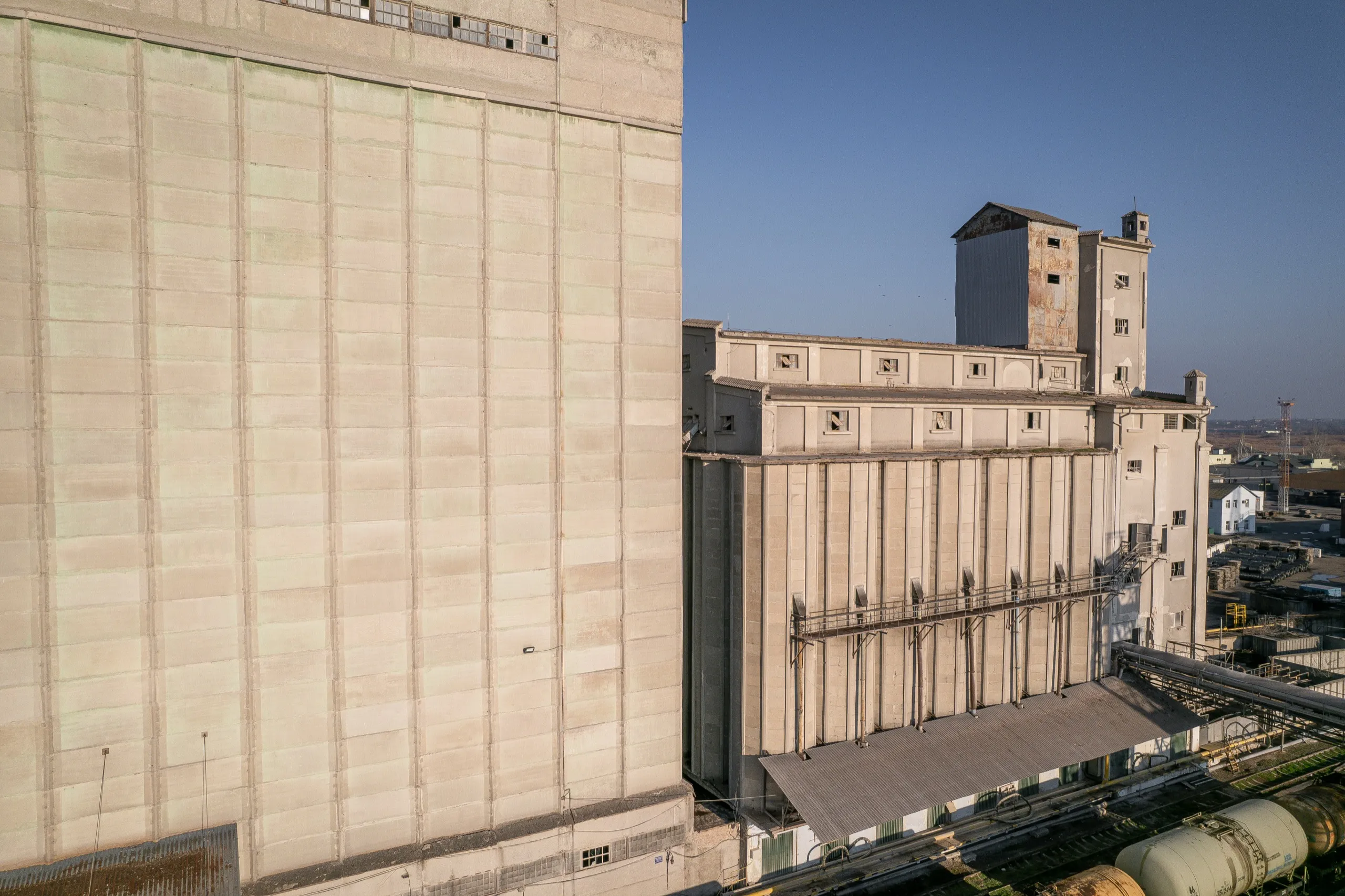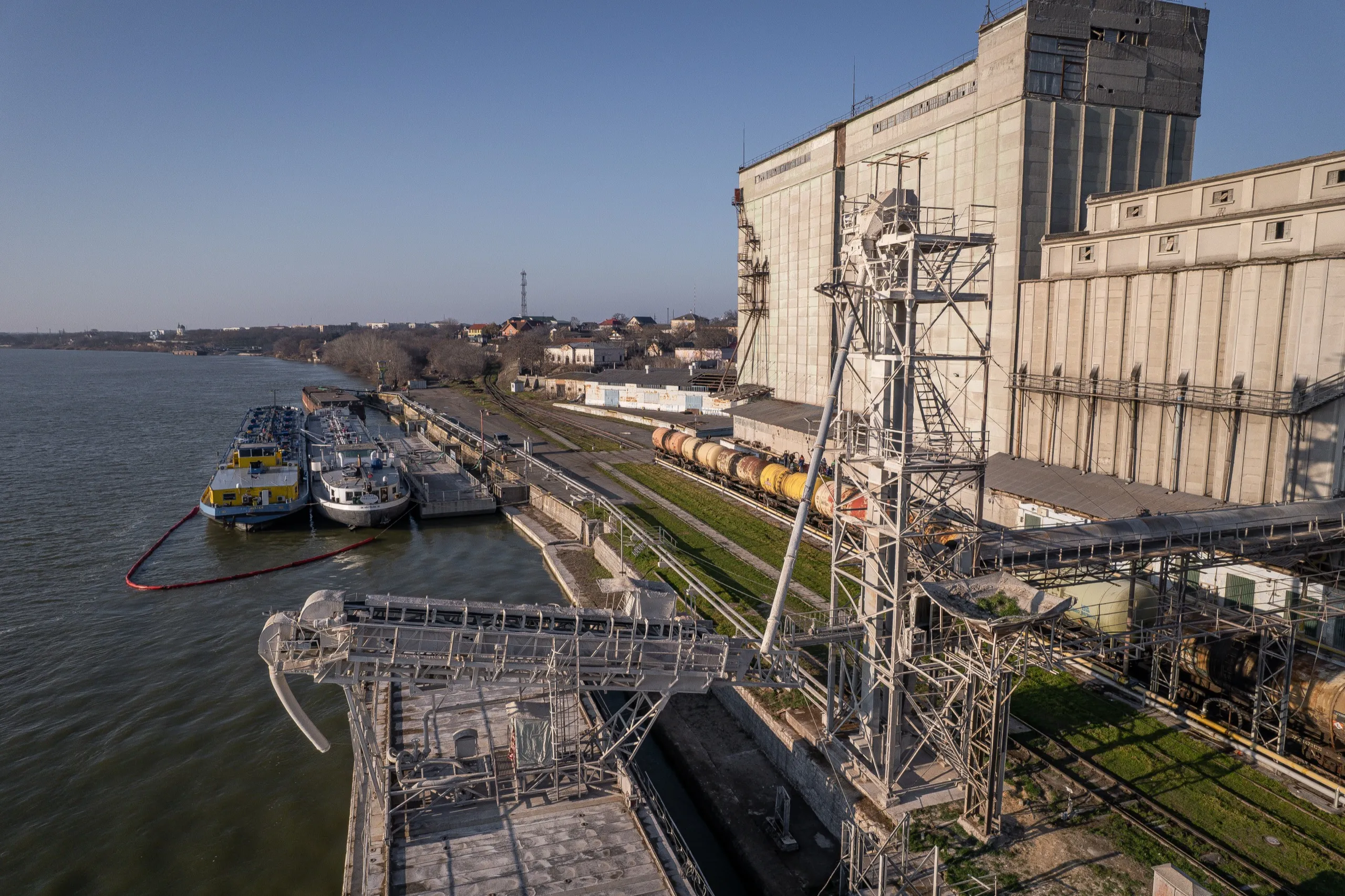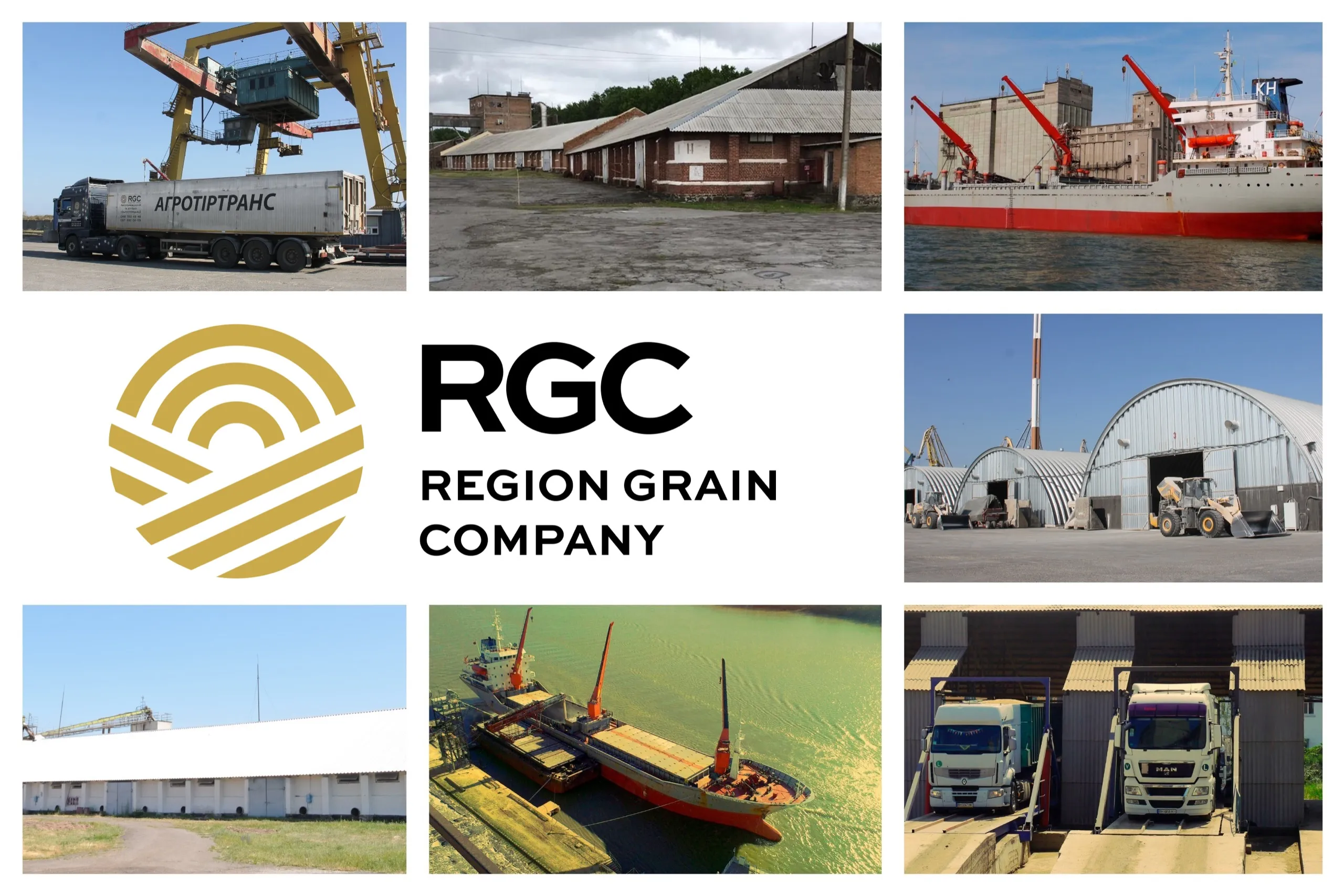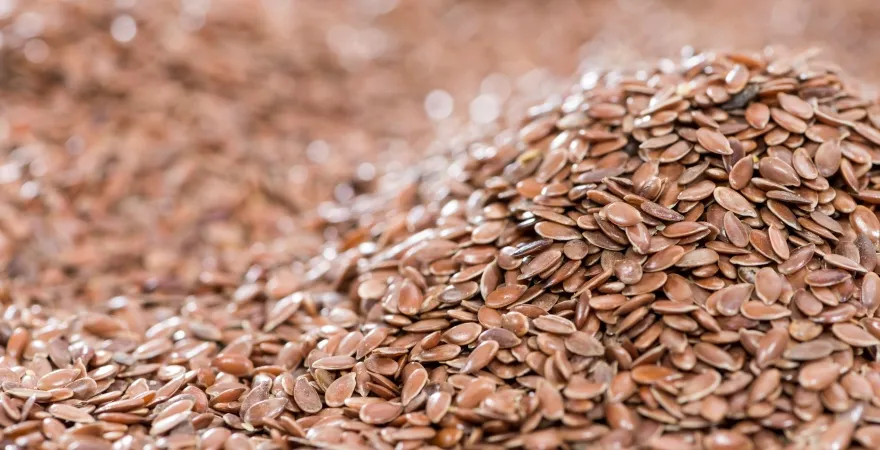RGC Group has been operating in the grain market in Ukraine for over 20 years. The group specialises in agricultural production, logistics and trading. The elevator business was launched in 2017, when the company acquired its first asset. Currently, RGC has 4 grain storage facilities with a total storage capacity of over 200 thousand tonnes of grain.

RGC operates transshipment facilities in the Black Sea port and on the Danube. RGC acquired the Izmail terminal of Sun Logistic in 2022, after the outbreak of hostilities in the country.
“We are actively engaged in trading, so this was a necessary step to continue our activities, taking into account military risks. It was a good asset acquisition, as the only ports that remained operational at that time were the Danube ports. Exports were then carried out through them,” says Sergey Onufriev, Chief Development Officer of E.K.O. Group, the port operator of RGC.
He says that having its own transshipment terminal on the Danube is very important for the company, as RGC continues to grow dynamically. And having its own terminal in Izmail makes the Group more flexible in finding the most efficient way to implement contracts. San Logistic terminal handles all major types of grain and oilseed cargo, and the company transships 250,000 to 300,000 tonnes per year. The main transshipment volumes are corn and wheat.
“In Izmail, we buy grain on CPT terms and provide transshipment services, everything is standard. Having our own transshipment terminal on the Danube is very important for the company. We also have our own facilities in Chornomorsk, where we also trade and transship grain. We work in both directions, depending on where the demand is. The Izmail terminal is definitely paying off,” says Sergey Onufriev.
Shipment of grain to the river fleet
The Sun Logistic terminal is able to ship grain to road and rail transport, including direct shipment. The shipment capacity for land transport is 200 tonnes per hour. And, of course, it transships 4-5 thousand tonnes of grain per day by water.
The bulk of the vessels the company works with are 5-7 thousand tonnes. The company also handles a barge fleet of 3-4 barges, which are then sent in a caravan to Constanta or Bulgaria. And it was the workers of the Izmail terminal who, for the first time in Ukraine, loaded a handysize vessel, not to the full hold (25,000 tonnes), but to the declared draft on the Sulphur. Later, this vessel was loaded in Constanta.
“We work with different vessels, and the size of the vessel depends on the draft that can be used to navigate the Sulina Canal. Sulina now announces a draught of 7.5 metres, sometimes 7.2-7.3 metres. Depending on the vessel design, this means 5-7 thousand tonnes of grain on average. However, we have also loaded larger vessels, 9-11 thousand tonnes, with reloading at the roadside,” says Andriy Osaulenko, director of the terminal.
The ship-loading machine was installed at the terminal in 2014, manufactured by a Dnipro company. The unit’s production capacity is 350 tonnes per hour, and it has an 11-metre extension boom that moves on rails. The terminal has plans to equip the shiploader with a conveyor to increase its mobility.
The Danube is a very unstable river in terms of water level. There are differences of several metres, depending on the weather and the time of year. Unlike the Dnipro River, which is well regulated by reservoirs and the water level changes do not exceed 40-50 cm, there are practically no currents on the Danube during low water, but when the water is high, the river is simply bursting with storms and trees are being carried along. That is why the issue of mooring vessels at the terminal’s berths is solved with the help of lighters.
“A lighter is a floating, non-self-propelled container, like a box, which is closed with lids. The lids are rigid and ribbed, and the next layer of litters is placed on them. It turns out to be a large container, but a container that can float. It needs a tugboat to move it, and it also needs a crane to lift the lid, because the lid weighs 5 tonnes. A lighter is considered a watercraft. It has a stern and a bow, mooring winches, and is tied to the shore with cables. When the water starts to rise, we release the cables,” explains Yuriy Kaduk, Deputy Director of Operations.
The lantern has rails for the unloading machine and also serves as a quay wall. Because the depth of the Danube near the berth is shallow, the vessel cannot be moored directly. So the vessel has to be moored behind the lighters, where the depths are already sufficient.
“The lighter is 37 metres long. A vessel comes, 118-120 metres long, and it presses against the lightship. The depth at the quay wall is 1.5 m, so the vessel cannot stand, but the lightship can approach and stand tightly, and the draft in riverboats is small, 1.2-1.3 m. Outside the lightship, the depth is about 8 metres, and ships can moor there. We have two lighters at the terminal, one is our own and the other is rented,” says Yuriy Kaduk.
Grain acceptance
The Izmail terminal of Sun Logistic accepts grain both from trucks and railways. Speaking of trucks, the terminal can receive about 160 vehicles per day, which is up to 4,000 tonnes of grain.
There are 80-tonne lifts installed at the car reception, 3 in total, but 2 are in operation, one of the lifts works with dump trucks. The equipment allows for the simultaneous reception of 2 different crops.
“We have 1 weighbridge at the terminal, which is enough for our work. The scales are automatic, with load cells, verified, with automatic data recording,” says Andriy Osaulenko, director of San Logistic LLC.
The volume of grain received by rail depends largely on how many wagons a station can handle. When San Logistic leased a locomotive from the railway, the acceptance rate increased from 14 wagons per day to 28.
“When UZ introduced the practice of renting a locomotive, we rented it and tried to work, which allowed us to increase the volume of cargo handling almost twofold, from 12-14 wagons to 28-30 wagons per day. That is, 3-4 thousand tonnes of cargo. I think that if we work a little more in this direction and rebuild some work processes, we can go up to 35-40 wagons per day. This is more than enough,” says the head of the company.
The Izmail terminal can accept grain both for storage at the elevator and for transshipment directly to water, depending on the client’s needs and the availability of a ready-made fleet. The terminal has two generators, one for 450 kW and the other for 550 kW, to operate in the event of a power outage.
Storage and accumulation facilities for grain consignments
If grain arrives at the terminal to accumulate an export consignment, it is accepted for storage. The company has 2 elevator complexes, both of which are grain storage facilities. The first complex was built in 1938-44. It is visually different from the elevators we are used to, built in Soviet times.
“The old elevator was built by Romanians under the leadership of the Germans, and Bessarabia was Romanian territory until 1945. There are three letters on the tower, the initials of the first owner of the elevator. The complex is made of precast concrete. It stands on piles, the foundation is a monolithic slab, and the silos are already ZOG, 59 of them in total. Of these, 35 are twelve-sided silos, and between them there are 24 more so-called four-sided ‘stars’. We also store grain in the asterisks, and the asterisk is just enough for one car,” Yurii Kaduk, Deputy Director of Operations, shows us the interesting complex.
The terminal replaced the old transport equipment with more powerful and modern ones, and installed belt conveyors with a capacity of 200 tonnes per hour. The equipment is domestic, manufactured by plants in Mykolaiv and Odesa. But the engines were Italian and the tyres were Turkish.
“The old elevator has chain conveyors. There was a time when we worked a lot with compound feed, and to reduce dust, we installed chain conveyors on the upper and lower galleries,” says Yurii Kaduk.
The second elevator complex is a typical grain storage facility built in 1973-75, with 117 silos. To be more precise, there were 117 silos before the Shahed hit – the Izmail terminal was under fire. And while the silos of the old complex withstood the attack, the new complex was damaged.
“The shahed hit 8 silos and partially damaged another 7. We have restored 3 of them and are currently working on restoring 4 more. They were not so badly damaged in depth, 1-2 slabs were knocked out, cracks, we can handle it ourselves, we have an assembly cradle. The rest cannot be repaired without a crane, they are end silos,” says Andriy Osaulenko.
By the start of the new season, the terminal plans to repair the grain dryer damaged by the shahed and resume full grain handling services. As the company’s director explained to us, the terminal used to provide such services to farmers, even though Bessarabia is an arid zone – farmers sometimes clean and dry rapeseed and sunflower at the terminal if necessary.
So the export grain consignment is accumulated at the terminal’s elevator complexes; brokers use an electronic system to take documents from farm owners, and then an electronic declaration is submitted to customs. At the terminal, the forwarding department draws up a shipment order, and then the cargo is cleared by Izmail Customs.
Prospects for the work and further development of transshipment
About 20-25 thousand tonnes of grain are transshipped at the Izmail terminal per month. RGC Group has already invested in the modernisation and renovation of the facility. Further financial injections will largely depend on the current situation with the hostilities and the grain market in the country, says Sergey Onufriev, Chief Development Officer of E.K.O. Group.
“Everything is dictated by the market and economic issues that are important for business. So far, I don’t see any nuances that interfere with our work. We are still handling about 20-25 thousand tonnes per month, with peaks of 25-30 thousand tonnes in December and October, and the terminal remains in demand. It makes no sense to make any predictions while the war is on. The situation is changing very dynamically, today it is like this, and tomorrow anything can happen. As long as there are risks, I believe that the Danube direction will be in demand,” says the CEO of E.K.O. Group.
Sergey Onufriev has been working on the Izmail direction for more than 10 years, and he says that the region always has its own grain transshipment volumes, even when the ports of Velikaya Voda are open. The San Logistic terminal handles grain from both Bessarabian producers and farmers from all over the country – grain is brought in from Poltava, Dnipro and Kharkiv regions.
“Logistics is quite seasonal, everything is on demand, Bessarabia is transported by road, and more remote areas are transported by rail. In 2022-23, the north of Odesa region and up the map were actively transported by road. In the middle of 2024, the second half of 2024 and in 2025, everything will go by rail. The transshipment rate is lower than on the big water, and the small difference in railway logistics is compensated for by this. Plus, there were still quite competitive moments in the chartering of the fleet, so the logistics through Izmail worked out well,” says Sergey Onufriev.
Although Bessarabia is located in a risky farming zone, producers here are actively growing grain. And according to farmers, despite the fact that there was little rainfall in autumn and winter, the crops in the region received the moisture they needed to grow and are now in good condition. In general, local farmers have done their homework, harvesting no worse than in other regions, and have selected the right varieties of grain and oilseeds for the climate zone. Therefore, the grain transshipment service in Izmail will be in demand, says Sergey Onufriev.
He believes that in general, the demand for a particular business process is regulated solely by market relations and economic results. In other words, if there is a need, there will be transshipment. However, he agrees with the opinion of NIBULON experts that it would be nice if the government helped to reduce railway tariffs for the delivery of grain cargo to the region.
Maya Mukha, Elevatorist.com



